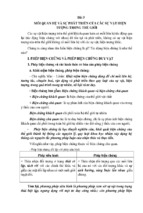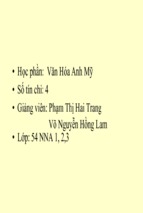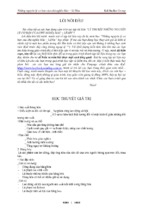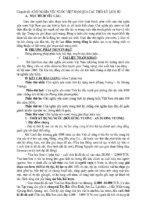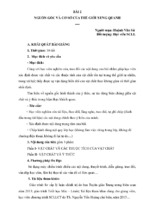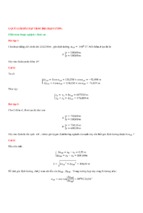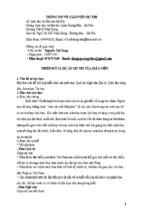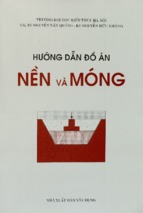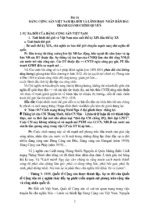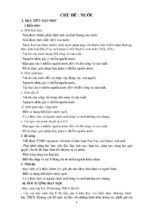Matthias Hofer (Editor)
N.Abanador
L. Kan1per
H. Rattunde
C. Zentai
+
Abbreviations
AAI
AAL
AC
ACB
AO
AP
ARDS
AV
AVM
AZ
BC
CCA
CHD
COA
COPD
CT
CVP
CTR
eve
CXR
DO
ODD
DIC
DISH
EEG
FAST
HRCT
IABP
lCD
ICS
ILO
IRDS
ITA
IVC
kPa
LA
Pacemaker code, see page 167
Anterior axillary line
Acrom1oclav1cular
Aortocoronary bypass
Aorta
Anteroposterior
Adult respiratory d1stress syndrome
Arterioventricular
Artenovenous malformations
Apical zone
Bronch1al carcinoma
Common carotid artery
Coronary heart disease
Coarctation of the aorta
Chron1c obstructive pulmonary disease
Computed tomography
Central venous pressure
Cardiothoracic ratio
Central venous catheter
Chest x-ray
Differential d1agnosis
Pacemaker code, see page 167
Disseminated intravascular coagulation
(,. consumption coagulopathy)
Diffuse idiopathic skeletal hyperostosis
Electrocardiogram
Focussed assessment with sonography for trauma
High-resolution computed tomography
Intra-aortiC balloon pump
Implantable cardioverter-defibrillators
Intercostal space
International Labor Office
Infant respiratory distress syndrome
Internal thoracic artery
Inferior vena cava
Kilopascal (unit of pressure)
Left atrium
lL
LLD
LV
ll
MCL
ML
mmHg
mSv
MZ
NHL
PA
PAL
PeP
PCWP
PDA
PEEP
PNET
PrO
OT
RA
RCS
RLD
RSS
RV
so
svc
TAA
TB
TEE
TGA
TIPSS
UICC
UL
uz
VDD
VSD
VVI
Lower lobe
Left lateral decubitus
Left ventricle
Lower zone
Midclavicular line
Middle lobe
Millimeters mercury column
Millisievert
Middle zone
Non-Hodgkin lymphoma
Pulmonary artery, Posterior-anterior View
Posterior axillary lme
Pneumocystis carinii Pneumonia
Pulmonary capillary wedge pressure
Patent ductus arteriosus
Pos1t1ve end-expiratory pressure
Primitive neuroectodermal tumor
Presumptive diagnosis
OT-time interval! (ECGI
Right atrium
Retrocardiac space
Right lateral decubitus
Retrosternal space
R1ght ventricle
Standard dev1at1on
Superior vena cava
Thoracic aort1c aneurysm
Tuberculosis
Trans esophageal echocardiography
Transposition of the great arteries
Transjugular intrahepatic portosystem1c shunt
Union internationale contre le cancer
Upper lobe
Upper zone
Pacemaker code, see page 167
Ventricular septal defect
Pacemaker code, se page 167
Acknowledgments
We would like to thank Inger Jurgens from Cologne, who contributed greatly to the success of this project with her gra phic
design work, drawings, and production support. We are grateful to my teacher, Prof. Dr. U. Madder, and to my colleag ues
Prof. Dr. Furst and Dr. Jorg Schaper for providing several of the illustrative images and offering advice on issues in pediatric
and critical-care medicme. We thank Prof. Dr. Peter Vock of the lnselspital in Bern, Switzerland for his kind permission to
reprint several images from his institution.
We thank Medtronic Hall, St. Jude Medical, and Biotronik for providing photographs of their pacemakers and prosthetic heart
valves, and we thank Braun Melsulgen and Bionic Medizintechmk for providing photographs of the1r catheters. We particularly thank Mr. Ralf Sickmg of Biotronik for supplying additional techn1cal background information. We thank the companies
C. R. Bard and Datascope for providing illustrative images of their port systems and the intra-aortic balloon pump.
We also thank our colleagues at the anesthesiology department (Prof. Dr. Tarnow, Director), Dr Andreas Schwalen (pulmonology), and Dr. Georg Gross (St. Josef Hospital, Haan) for providing the intervent1onal images and for critically reviewing
the manuscript. We are grateful to our copyeditors Stefanie Hofer, Dr. Uwe Hoffmann, Michelle Abanador, and Svenja Kamper
for their meticulous proofreading. Mr. Alexander Rosen was kind enough to do a headstand to illustrate the basal-to-apical
redistribution of pulmonary blood flow. Finally, we will be grateful for any comments or suggestions which our readers may
send to the publisher on how this workbook might be improved (see p. 2).
The Authors
October, 2006
~~r
The~~Hest
X-Ray
A Systematic Teaching Atlas
fj
ng
)
~ rh!eme
Getting the Most out of this Book
I
This workbook has several features that will help you learn the systematic viewing and interpretation of chest radiographs
in the most efficient way:
To save time, the figure numbers are based on page numbers
While many textbooks require readers to leaf through numerous pages to find, say, "Figure 2.23" (i.e ., the 23rd figure in Chapter
2), the figures in this workbook are easy to locate because they are based on page numbers. For example, if you are looking
for Figure 121.2a, you can find it quickly and easily by turning to page 121.
Additional time is saved by presenting topics on facing pages
The running text that describes abnormalities and their imaging features is generally placed close to the corresponding
images- usually on the same page or on two facing pages. This makes it easy to compare posteroanterior (PA) and lateral
radiographs or ultrasound images and computed tomography (CT) scans without having to hunt through the book.
Numerical labels and colors
Many structures in the illustrative images are labeled with numbers rather than abbreviations. These black numerical labels
appear in boldface type and parentheses when they are cited in the text. This allows you to view every image with a detective's eye and identify structures on your own, without being prompted by a label that gives you the answer. This active problem-solving approach is an excellent way to learn, even though it may seem "inconvenient" at first. The [numbers in brackets
refer to the list of references on the back flap of the book.
Direction of the blue arrows
Many critical findings in images are indicated by green arrows. Notice which direction the arrows are pointing when you want
to find the arrow reference quickly in the text. The direction in which a particular arrow is pointing in an image corresponds
precisely to the direction the arrow in the accompanying text on that page is pointing. This makes it easy to locate the text
passage that describes the finding of interest.
Repetition
In some cases the same finding may appear at different places in the book. Firstly, this repetition is based on discoveries from
research on learning and memory, which confirm the value of repeating information at intervals (this principle is reinforced by
the quiz sections). Also, some findings may have a patchy, focal, or reticular appearance on images and are therefore listed as
a possible differential diagnosis in more than one chapter.
'I
Matthias Hofer, MD, MPH, MME
Diagnostic Radiologist
University Hospital Duesseldorf
Heinrich-Heine University
Duesseldorf, Germany
Nadtne Abanador, MD
Department of Cardiology
Hellos Cltn1c Wuppertal
Wuppertal, Germany
Lars Kamper, MD
Clinic for Internal Medicine and Cardiology
Alfried-Krupp Hospital
Essen, Germany
Henning Rattunde, MD
Institute for Diagnostic, lnterventional,
and Pediatric Radiology
lnselspital, University Hospital Bern
Bern, Switzerland
Christian Zentai
University Hospital Aachen
Clinic for Anesthesiology
Aachen, Germany
Library of Congress Cataloging-in-Publication Data
is available from the publisher.
© 2007 (english edition), Georg Thieme Verlag,
RudigerstraBe 14, 70649 Stuttgart, Germany
Thieme New York, 333 Seventh Avenue,
New York, N.Y. 10001, U.S.A.
Design and Typesetting by:
Dipl. Des. Inger Jurgens, Cologne: www.mgerj.de
Important Note: Medicine is an ever-changing science undergoing continual development. Research and clinical experience
are continually expanding our knowledge, in particular our
knowledge of proper treatment and drug therapy. Insofar as this
book mentions any dosage or application, readers may rest
assured that the authors, editors, and publishers have made
every effort to ensure that such references are 1n accordance
with the state of knowledge at the time of production of the
book.
Nevertheless this does not involve, imply, or express any
guarantee or responsibility on the part of the publishers in
respect of any dosage instructions and forms of application
stated in the book. Every user is requested to examme carefully the manufacturers' leaflets accompanying each drug and to
check, 1f necessary in consultation with a physician or specialist, whether the dosage schedules mentioned therein or the
contraindications stated by the manufacturers differ from the
statements made in the present book. Such examination is
particularly important with drugs that are either rarely used
or have been newly released on the market. Every dosage
schedule or every form of application used is entirely at the
user's own risk and responsibility. The authors and publishers
request every user to report to the publishers any discrepancies
or inaccuracies noticed.
If errors in this work are found after publication, errata will be
posted at www.thieme.com on the product description page.
Some of the product names, patents, and registered designs
referred to in this book are in fact registered trademarks or
proprietary names even though specific reference to this fact is
not always made in the text. Therefore, the appearance of a
name without designation as proprietary 1s not to be construed
as a representation by the publisher that it is ·n the public
domain.
Printed in Germany by: WAZ-Druck, DUtsburg
ISBN 978-3-13-144211-6 (GTV)
ISBN 978-1-58890-554-3 (TNY)
ISBN 978-3-13-144971-9 (Asia)
This book, including all parts thereof, is legally protected by
copyright. Any use, exploitation or commercialization outside
the narrow limits set by copyright legislation, without the
publisher's consent, is illegal and liable to prosecution. This
applies in particular to photostat reproduction, copying, mimeographing or duplication of any kmd, translating, preparation of
microfilms, and electromc data processing and storage.
Contents Overview
Chapter 1
Thoracic Anatomy
Chapter 2
Image Interpretation
p.23
Chapter 3
Chest Wall: Soft Tissues and Bone
p.35
Pleura
p.51
Mediastinum
p.63
, Chapter 4
Chapter 5
hapter 10
Chapter 11
p. 7
Patchy Lung Changes
p.1 05
Focal Opacities
p.123
Linear and Reticular Opacities
p.139
Foreign Bodies
p.157
Thoracic Trauma
p.183
Intensive Care Unit
p.197
I
I
I
I
I
I
I
I
II
a
I
Appendix
Detailed information on chapter contents can be found at the
beginning of each chapter and in the Table of Contents on pages 4
and 5.
Table of Contents
Chapter 1
Thoracic Anatomy
Chapter Goals
Thoracic Skeleton, lucencies, Opacities
Principal Divisions of the lung, lobar Anatomy
Segmental Anatomy
Tracheobronchial Tree
Segmental Anatomy on CT Scans
Fine Structural Divisions of the lung
Pulmonary Vessels
Mediastinal Borders
Interstitium and lymphatic Drainage
Bronc hial Vessels and Innervation
Chapter 2
7
8
10
12
13
14
16
18
20
21
22
Image Interpretation
Chapter Goals
AP versus PA Radiographs
Calibers of Pulmonary Vessels, Depth of Inspiration
Scatter-Reduction Grids
Determining the CTR, Effect of Age
Silhouette Sign
Perfusion and Ventilation
Sequence of Image Interpretation
"Crying lung" (Pediatrics)
Quiz - Test Yourself !
23
24
25
26
27
28
29
30
31
32
Chapter 3 Chest Wall: Soft Tissues and Bone
Chapter Goals
Density Variations
Other Soft-Tissue Effects
Soft-Tissue Emphysema, Pneumomediastinum
Variants in the Thoracic Skeleton
Clavicle, Acromioclavicular Joint
Tessy and Rockwood Classification, Humerus
Ribs, Rib Notching
Skeletal Metastases
Spinal Degenerative Changes
Scheuermann Disease
Intra-abdominal Findings
Quiz - Test Yourself !
Chapter 4
Chapter Goals, Normal Findings
Pleural Thickening
Pleural Fibrosis
Pleural Calcifications
Pleura l Tumors
Thoracentesis
Quiz - Test Yourself !
35
36
37
38
39
40
41
42
43
45
46
47
48
Pleura
51
53
54
56
58
60
62
Chapter 5
Mediastinum
Chapter Goals
Normal Mediastinal Contours
Mediastinal Widening
Retrosternal Go1ter
lymphomas
Thymus
Germ Cell Tumors, Lymphangioma
Lymph Node Enlargement
Hilar Widening
Central Bronchial Carcinomas
Vascular Hilar Changes
Neurogenic Tumors
Mediastinal Abscess
Heart
Cardiomegaly
Congenital Valvular Disease
Aortic Configuration
Mitral Configuration
Congenital Heart Disease
Tetralogy of Fallot
Coarctation of the Aorta
Transposition of the Great Arteries (TGA)
Pericardium
Pericardia! Effusion, Pericardia! Tamponade
Pericarditis, Pneumopericardium
Pericardia! Cysts
Aorta
Aortic Aneurysm
Aortic Dissection
Aortic Sclerosis, Right Descending Aorta
Esophageal Diverticula
Esophageal Carcinoma
Diaphragmatic Hernias
Mediastinal Emphysema, Mediastinal Shift
Quiz - Test Yourself !
Chapter 6
63
64
65
68
69
70
71
72
73
76
77
78
79
81
82
83
85
86
87
88
89
90
91
92
93
94
95
96
97
98
99
101
Patchy Lung Changes
Chapter Goals
Opacities
Pleural Effusions
Crescent Sign
Differential Diagnosis of Pleural Effusion
Differential Diagnosis of "White lung"
Upper lobe Atelectasis
Middle Lobe Atelectasis
Lower Lobe Atelectasis
Segmental Atelectasis
Differentia l Diagnosis of Segmenta l Atelectasis
Pneumonia
Misdirected Intubation, Tumors
Hyperlucent Areas
General Differential Diagnosis of Hyperlucencies
Emphysema, Bullae
(Tension) Pneumothorax
Quiz - Test Yourself !
105
106
107
108
110
111
112
113
114
115
116
117
118
119
120
121
-
-
~
Table of Contents
Chapter 7
Focal Opacities
Chapter Goals
Differential Diagnosis of Solitary Focal Opacities
General Differential Diagnosis, Criteria for Benignancy
Differential Diagnosis of Solitary Focal Opacities
Pulmonary Metastases
Azygos Lobe
Bronchial Carcinoma
TNM Classification
Clinical Manifestations
Intrapulmonary Hemorrhage
Sarcoidosis (Boeck Disease)
Tuberculosis (Tb)
Differential Diagnosis of Multiple Focal Opacities
Wegener Granulomatosis, Multiple Metastases
Differential Diagnosis of Ring Shadows and Cavities
Aspergillosis, Tumor Necrosis
Quiz - Test Yourself !
Chapter 8
124
125
126
127
128
129
130
131
132
133
134
135
136
137
Linear and Reticular Opacities
Chapter Goals
Variants: Azygos Lobe, etc.
Pulmonary Congestion and Pulmonary Edema
':ongestion in Pulmonary Emphysema
Alveolar Pulmonary Edema
Forms of Pneumonia
Pneumocystis carinii Pneumonia (PeP)
Differential Diagnosis of Pneumonia
Pneumoconiosis, Classification
Silicosis, Asbestosis
Pulmonary Fibrosis
Bronchiectasis
Carcinomatous lymphangitis
Quiz- Test Yourself!
Chapter 9
123
139
140
141
142
143
144
146
147
148
149
150
151
152
154
Foreign Bodies
Chapter Goals
Central Venous Catheters (CVCs)
Catheter Types and Applications
Catheter Insertion
EGG-Guided Catheter Insertion
Complications
Port Systems
Dialysis Catheters: Shaldon, Demers
Pulmonary Artery Catheters
Pacemakers
Designations, Pacing Modes, Typical ECG
VVI/DDD Pacemakers
AAINDD Pacemakers
Biventricular Pacemakers
Intra-Aortic Balloon Pump (IABP)
157
158
159
162
163
164
165
166
167
168
169
170
171
5
Prosthetic Heart Valves
Mechanical and Biological Valves
lilting-Disk and Bileaflet Valves
Caged Ball Valves and Bioprosthetic Valves
Annuloplasty
Echocardiography, CT, MRI
Endotracheal Tubes
Foreign Material in the Gastrointestinal Tract
Aspirated Foreign Bodies
Foreign Materials Checklist
Quiz - Test Yourself !
Chapter 10
172
173
174
175
176
177
178
179
181
182
Thoracic Traum a
Chapter Goals
183
Rib Fractures
184
Hemothorax
186
Multiple Rib Fractures, Volume Estimation
187
Sternal and Vertebral Body Fractures
188
Parenchymal Lung Injuries
189
Pneumothorax
190
Pneumomediastinum
193
Focused assessment with sonography tor trauma (FAST) 194
Quiz - Test Yourself !
196
Chapter 11
Intensive Care Unit
Chapter Goals
Foreign Material
(Endotracheal Tubes, Catheters, Pacemakers)
Pulmonary Congestion and Edema
ARDS, IRDS
Pneumothorax on Supine Radiographs
Insertion of a Chest Tube
Hemothorax, Pulmonary Embolism
Quiz - Test Yourself !
197
198
200
201
202
204
207
208
Appendix
Answer Key
Radiation Safety and Technology
Subject Index
List of References
Number Key for Diagrams
209
222
223
Inside back cover
Inside back cover flap
Foreword
Radiography of the heart and lung is still the most widely practiced 1magmg procedure. Chest radiographs are an indispensable part of the basic diagnostic workup in major medical disciplines such as mternal med1cine, the surgical specialties,
anesthesiology, and occupational medicine.
For that reason, students, residents and beginning practitioners have need for a practical reference guide that can lead them
on the path from radiographic features to diagnostic interpretation in a systematic way. The analytical format of this book
should enable you to recognize the most important and most common findings while giving you greater confidence in reading
and interpreting radiographs.
This book contains numerous illustrative radiographs, all vividly instructive and many accompanied by examples from other
imaging modalities Text and illustrations are presented side-by-side to facilitate learning, and structures of key interest are
clearly indicated by arrows and numerical labels. A fold-out number key underscores the pract1ce-onented and user-friendly
format in which the matenal1s presented. The numerous qu1z sections allow you to check your progress and see how well you
have mastered the essentials. The book is characterized by a h1gh density of information within a small space- even includmg
step-by-step 1nstruct1ons on thoracentesis, chest tube insertion, and the msert10n of central venous catheters (CVCs).
The superb image quality, conc1se text, and extremely favorable cost-to-value ratio make it easy to recommend "Chest X-Ray"Atlas for all students and residents who are embarking on their professional career.
Prof. U. Madder, M.D.
Director, Department of D1agnostic Radiology
Dusseldorf University Medical Center
Dusseldorf, Germany
Preface by the Authors
What makes th is book different from comparable titles?
Most radiology textbooks are orgamzed according to disease groups or pathophys1olog1cal categories. But in the everyday
practice of chest radiography, we do not address the question of, say, wh1ch "pneumoconiosis" should be considered in the
differential diagnosis. Instead, the mterpreting physician is confronted w1th patchy, streaky, reticular, or nodular opacities in
the pulmonary interstitiUm or parenchyma that he or she must fit into a differential diagnostiC framework. Accordingly, this
workbook is orgamzed according to the morphological patterns that are actually seen on chest radiographs. There are also
chapters that teach readers how to interpret the widening of the mediastinum and how to address specific clinical problems
in ventilated intens1ve care unit (ICU) patients and trauma patients.
In using this book, you will come upon quiz sections that present Illustrative cases and ask questions about them. These
questions are designed to help you learn through the repetition and practical application of key points - points that might
be missed or quickly forgotten by just skimming through the material. As a result, you may find this workbook somewhat "unpleasant" at first, but on closer scrutiny you will see how effective it is in reinforcing long-term learning.
We hope you will enjoy using this book and we wish you much success in applying what you have learned.
On behalf of the authors:
October 2006
Matthias Hofer, M.D .• MPH, MME (ed.)
Matthias Hofer
Thoracic Anatomy
Chapter Goals :
Thoracic Skeleton
We begin this workbook by familiarizing you with
thoracic anatomy as it normally appears on chest
radiographs. The positive identification of anatomical structures is essential for accurate image
analysis and will prevent many potential errors of
interpretation.
Principal Divisions of the Lung
A major goal of this chapter is to acquaint you with
the appearance of pu lmonary vessels, bronchi,
thoracic skeletal structures, and the mediastina l
contours. On completing this chapter, you should
e able to:
p.8
p.1 0
Lobar Anatomy
p.1 0
Segmental Anatomy
p.12
Tracheobronchial Tree
p.13
Segmental Anatomy on CT Scans
p.14
Fine Structural Divisions of the Lung
p.16
• correctly identify (step 1) and draw (step 2) the
structures of thoracic topographical anatomy as
they appear on chest radiographs;
Pulmonary Vessels
p.18
Mediastinal Borders
p.20
• localize focal abnormalities to specific pu lmonary lobes and segments;
Interstitium and Lymphatic Drainage p.21
Bronchial Vessels and Innervation p.22
• draw and correctly label from memory the
mediastinal borders as they appear on posteroanterior (PA) and lateral radiographs;
• detect any abnormalities in the mediastinal
Silhouette and relate them to the most likely
causes;
• correctly describe the basic anatomical struc ture of the lung, its tracheobronchial tree, and
the pulmonary vessels;
• describe the basic physiological principles
of respiration, gas exchange, and lung perfusion.
Please take the self-quiz at the end of Chapter 2 (p. 32-34) to
see how well you have achieved these goals. To avoid the false
sense of security that short-term memory gives, we suggest
that you wait several hours before taking the quiz. Working
through these first two introductory chapters can be a valuable
exercise for physicians as well as medical students, because
we know from experience that many details of topographical
anatomy can fade over time, often to an unexpected degree.
We wish you much success!
•
I
1
Anatomy
Thoracic Skeleton
The bony structures of the chest absorb and scatter roentgen
rays, thus causing greater attenuation (weakening) of the
roentgen ray beam than the lung tissue and other thoracic
soft tissues. Because of this, less radiation reaches the
roentgen ray mtensifying screen behind vertebral bodies (26),
ribs (2), clavicles (23), and scapulae (27), and less film blackening occurs in those areas. This is why bony structures
appear lighte r on radiographs than the darker lung parenchyma, for example. These areas of increased attenuation are
call ed "opacities" in radiology, despite their greate r brightness (Fig. 8.1).
Conversely, areas that are more easily penetrated by the
roentgen ray beam are called "lucenc1es" because of their
hyperlucent (= darker than normal) appearance. Examples
are hyperinflated lung areas and emphysematous bullae. The
posterior rib segments (22a) are directed more or less horizontally, while the antenor segments (22b) pass obliquely
forward and downward. Occasionally, beginners will misinterpret the apical lung region enclosed by the first rib (*)as
an emphysematous bulla (seep. 119) or apical pneumothorax
(see p. 120) because of its hyperlucent appearance. Actually
this is an optica l illusion created by the strong contrast
between the low radiogra phic density of the apical lung and
the high radiographic density of the first rib.
28
27
26
Fig. 8.1b
Fig. 8.1a
Thus, the radiographic appearance of thoracic structures depends mainly on their density. While areas with a high density per
unit volume (e.g., cortical bone) appear light or white, areas with a lower density that are more transparent to roentgen rays
(e.g., air in the alveoli) appear dark (Fig. 8.2).
Bone
Lead
Brightness on
radiograph
Fig. 8.2
D
D
D
Muscle,
blood
Liver
LiJ
LiJ
~
~
D
D
Fat
II
Air
II
Moreover, the interface between tissues of different density
must be struck tangentially by the roentgen ray beam in order
to appear as a well-defined boundary hne on radiographs
(fig. 9.1) For example, the horizontal fissure of the lung (30)
is directed parallel to the beam axis in lateral and PA radiographs, and therefore it appears as a thin, white boundary
line m both projections (fig. 8.1a and Fig. 9.2). The same
phenomenon occurs w1th the ribs. Normally only the supenor
and infenor cortical nb margins bounded by the intercostal
spaces are displayed as boundary lines. The density difference between the center of the ribs and the adjacent lung or
adjacent soft-tissue envelope is not visualized (Fig. 9.1).
I
Object
(e.g., a rib)
Co nto urs
are defined
only when
tangential to
the beam
Roentgen
ray
source
Fig. 9.1 Note: Only interfaces that are struck tangentially by the roentgen ray beam appear as boundary lines on the
radiograph
In the lateral projection, the roentgen ray beam is tang ential
to the upper and lower endplates of the thorac ic vertebra l
bodies (26), to the sternum (24), and to the cortica l lines of the
scapulae (27). As a result, these structures are prominently
displayed as white boundary lines (Fig. 9.2). The clavicles
(23) are usually obscured by a summation effect from the soft
tissues of the superior thorac ic aperture and the neck.
Fig. 9.2a
Fig. 9.2b
1
Anatomy
Principal Divisions of the lung
The upper portion of the lung 1n the PA radiograph can generally be divided into an apical zone (AZ) located above the
clavicle (23) and an upper zone (UZ) extending from the
inferior border of the clavicle to the superior border of the
pulmonary hilum (Fig. 10.1). Just below the UZ is the middle
zone (MZ), wh1ch extends down to a line separating the
middle and lower thirds of the lung, approximately at the
lower end of the pulmonary hilum. The lower zone (LZ) of the
lung extends from that line down to the diaphragm leaflet (17).
Additionally, distinguishing the perihilar root of the lung from
the central lung and the
ng (Fig. 10.2) can be
helpful in the pathophysiological classification of some
diseases. For example, these regions are drained by different
lymphatic channels, and this has a bearing on the potential
routes of lymphogenous metastasis.
Fig. 10.1
Fig. 10.2
l obar Anatomy
The divisions described above do not conform to the lobar
boundaries of the lung. It is interesting to note that each of
the lower lobes (lls) (34) extends to a much higher level,
especially posteriorly, than the beginner might think (Fig.
10.3). The superior segment of the LL (segment no.6, see
p. 12) usually extends slightly higher on the left side than on
the right, and on both sides it occupies a higher level than the
typical extent of the right middle lobe (ML) (33).
This may be clinically important in localizing a finding to a
particular lobe, as when planning the bronchoscopic extraction of a radiopaque foreign body or a bronchoscopic biopsy.
~
Upper lobe (32)
D
Middle lobe (33)
ill] Lower lobe (34)
.,.. ....
, _,'
(
Right late ral
Right PA
Left PA
Le ft lateral
Fig. 10.3 Extent of the pulmonary lobes on radiographs. Summation views in various projections
Heart
lobar An atomy
Figure 11.1 shows the typical course of the interlobar
fissures. The course of the oblique fissure (30) between the
upper lobe (UL) (32) and LL (34) resembles a propeller blade.
The dotted lines indicate the course of the oblique fissure
along the medtastmum, and the solid lines indicate its course
along the ribs (Fig. 11.1). The horizontal fissure (31 ) and ML
(33) extst only in the right lung.
Figures 11.2 and 11.3 show the radiographic projections
of the pulmonary lobes as they appear in the right and left
lateral views.
Fig. 11.1 Course of the fissures in the lateral projections
Fig. 11.2 Right lateral view
Fig. 11.3 Left lateral view
The inflammatory infiltration of an entire lobe ("lobar
pneumonia") appears as a homogeneous lobar opacity that
displays a typtcal configuration and extent in the lateral and
frontal radtographs (Fig. 11 .4). The lobar volume, and thus the
course of the lobar boundaries, usually remains constant in
lobar pneumonia, or the volume of the affected lobe may be
slightly increased.
A different pattern is produced by decreased ventilation
(dyselectasts) or atelectasis in which a lobe is no longer
ventilated due, for example, to mucus plugging or neoplastic
bronchial obstructiOn. After a certam latent period, the loss of
ventilation causes a decrease m the volume of the affected
lobe, whtch usually shows homogeneous opacity on radiographs (see also p 111-114).
Upper lobe opacity
Middle lobe opacity
CJ ~
~ ~
Right
Fig. 11.4
Frontal
Left
Right
Lower lobe opacity
Frontal
Left
Right
Frontal
Left
II
Segmental Anatomy
It is important to have a thorough knowledge of segmental
anatomy, as this will enable you to state the precise location
of a focal abnormality. The followmg sports-inspired mnemonic may assist you in learning the names of the various
segments (Fig. 12.1):
To reach the top, you have to fight your way from back to
front, often taktng a stde route past the middle. Now you're at
the top, and the rest are at the bottom. Many are on the sideline, poor souls!
(1 )
I
(2)
(3)
(4)
(5)
(6)
(7-10)
(7)
(8)
(9)
(10)
t:_?..lir
... , 1
u~ ~
'¢J
Top
Back
Front
Side
Middle
Top
Bottom
Many
Are
Sideline
Poor
Apikal
Posterior
Anterior
Latera l
Medial
Superior
Basal
Mediobasal
Anterior
Laterobasa I
Posterobasal
Fig. 12.1
the aid of these diagrams (Fig. 12.2). When you have done
this, cover the page and draw the typical segmental arrangement from memory on a separate sheet of paper. Finally, refer
back to the diagrams to check the accuracy of your drawing.
It is common to find a vanant in the left lung in which
segments 1 and 2 arise from the same bronchus and are
known collectively as the aptcoposterior segment of the UL.
Please memorize the location of the individual segments with
UL
1+2
2
But take note: Passive copying is of
little benefit. Active memorization
takes more effort but ts definitely
more rewarding.
3
ML
4
5
6
1
9
10
Which segment is absent on the left
side and why?
Segments 4 (superior) and 5 (inferior) on the left side are also called
the "lingula".
8
LL
Fig. 12.2 Typical arrangement and extent of the pulmonary segments
Tracheobron chial Tree
The trachea (14) contains 15-20 horseshoe-shaped cartilage
rings that protect it and stabilize it against negative pressures
during inspiration. The rings are incomplete posteriorly, sparing the membranous posterior wall of the trachea. The cross
section of the trachea is slightly flattened posteriorly during
inspiration and reexpands during inspiration to a circular
diameter of approximately 26 mm in men and 22 mm in
women . The trachea begins at the level of the sixth or
seventh cervical vertebrae and descends for approximately
10-12 em to its bifurcation (14c) at the level of the fourth to
sixth thoracic vertebrae. There it splits into the two main
bronchi, forming a normal bifurcation angle in the PA projection of 55-70° in adults and up to 70-80° in children. The tracheal bifurcation is symmetrical until about 15 years of age,
and thereafter the right main bronchus generally runs more
vertically than the left. Because of this asymmetry, foreign
bod1es are more likely to be aspirated into the right main
bronchus than the left. A bifurcation angle greater than goo
suggests the presence of a mass lesion near the carina.
The nght main bronchus (14a) runs more sharply downward
than the left, d1viding after only about 3 em into the laterally
directed UL bronchus and the 2- to 3-cm-long intermediate
bronchus. The ML bronchus arises from the anterolateral
aspect of the Intermediate bronchus at the same level where
the posteriorly directed segmental bronchus branches to the
superior LL segment no. 6. (This is the only segmental bronchus that divides into three subsegmental bronchi; the other
segmental bronchi each divide into only two.)
The left main bronchus (14b) runs laterally downward for
approximately 5 em before dividing into the upper and LL
bronchi. The left UL bronchus also runs laterally. In approximately 80% of cases, the first two segmental bronchi arise
from the UL bronchus by a common trunk, which is why segments 1 and 2 on the left side are known collectively as the
"apicoposterior segment." Anterior UL segment 3 runs forward, while the lingular segments 4 (superior) and 5 (inferior)
run more anterolaterally. The LL bronchi descend sharply to
supply the basal segments 7-10 or 8-10 (Fig. 13.1).
Membranous
posterior wall
4
's
\
9
Fig. 13.1 Antenor view
Postenor view
Because both UL bronchi have a relatively horizontal orientatiOn, they are viewed end-on in the lateral radiograph, appeanng as round or elliptical radiolucent "holes" below the tracheal column. The right UL bronchus generally occupies a
slightly higher level than the left UL bronchus (Fig. 13.2).
When viewed in the PA radiograph, the anterior segmenta l
bronchus no. 3 of the left lung (~)is projected as a rounded
lucency just lateral to the accompanying artery.
Fig. 13.2 Lateral view of the upper lobe bronchi
II
Anatomy
Segmental Anatomy on CT Scans
The pulmonary vessels and mterlobar fissures can be
accurately 1dent1f1ed on thin computed tomography (CT)
slices (HRCT = high-resolution computed tomography).
The horizontal and oblique fissures (solid blue lines) can be
positively identified by the presence of adjacent hypovascular areas (Figs. 14.1 to 15.3).
1
Normally, however, the boundaries between the lung
segments cannot be Identified. They are indicated here by
broken blue lines.
The blue Arabic numbers represent the bronchial segments
and do not correspond to the number key at the end of the
book.
I
Fig. 14.1a
Fig. 14.1b
Fig. 14.2a
Fig. 14.2b
Fig. 14.3a
Fig. 14.3b
Fig. 15.1 a
Fig. 15.1b
Fig. 15.2a
Fig. 15.2b
Fig. 15.3a
Fig. 15.3b
-
6
I
1
Anatomy
Fine Structural Divisions of the lung
The air passages past the subsegmental bronchi continue to
branch in a dichotomous pattern, div1dmg in approximately
seven generations into the lobular bronchioles (1.2- 2.5 mm in
diameter) and terminal bronchioles (1.0- 1.5 mm in diameter).
After entering the secondary lobules (10- 25 mm in diameter), the passages divide further into multiple acini. Alveoli
bud from the walls of the respiratory bronchioles, marking the
level at wh1ch gas exchange begins (Fig. 16.1). Because the
cross section of the air passages expands abruptly at this
level. the velocity of the laminar air flow decreases, creating
conditions that are favorable for gas exc hange. The respiratory bronchioles finally gives rise to 2 - 11 alveolar ducts,
which open at numerous sites into the alveolar saccules.
The acini represent the next subunit of a secondary lobule
and measure approximately 4 - 8 mm in size. One acinus
generally contams approximately 400 alveoli ranging from
0.1 - 0.3 mm m diameter (Fig. 16.2). The acini are the sites
where ventilation and perfusion are coordinated in the lung
(see p. 29). It IS est1mated that adults have a total of approximately 300 million alveoli, 90% of which have capillaries
available for gas exchange. Th1s IS equivalent to a surface
area of about 80 m2, or the approximate area of a badminton
court.
The primary lobules are too small to be resolved on radiograph films. Acinar shadows are larger than the smallest
interstitial linear opacities. but they represent the smallest
alveolar opacities that ca n stil l be seen on radiographs.
Termi nal
Respiratory
bronchioles
(17th-19th gen.)
Al veolar
Alveolar
saccules
(23rd gen.)
I
- - - -1
Primary
lobule
Acinus
(5-8 mm)
Bronchi
: Bronchiol es
(2nd-4th gen.) 1 (5th-15th gen.)
•::======
Secondary lobule
(1-2.5 em)
~----~--------
Fig. 16.1
Interlobular vein
Approximately 95% of the alveolar epithelium consists of
membranous type I pneumatocytes on a basement membrane. The diffusion pathway to the capillaries in the adjacent
interstitium measures only 1 1-Lm or less at many sites. The
less numerous. granular type II pneumatocytes are involved
in reparative funct1ons and form the surfactant that lowers
the surface tension in the lung to prevent alveolar collapse.
Various shunts are available for collateral ventilation:
Adjacent alveoli are interconnected by pores approximately
5 - 15 1-Lm in size, similar to the Lambert canals between the
alveolar ducts and saccules.
alveolar duct
Fig. 16.2
I
Pulmonary Vessel s
The linear opacit1es in the lung parenchyma are caused by the "shadows" of the pulmonary vessels (10). As these vessels
undergo repeated branchmg, normally their calibers taper smoothly from the central pulmonary hilum to the outer, peripheral
region of the lung. Because the pulmonary arteries accompany the bronchi, the direct proximity of a relatively large pulmonary artery to a bronchus in cross section is a good differentiating criterion from pulmonary veins, which run between the
segments and not along their centers. Smaller arterial branches are virtually indistinguishable from venous branches in the
periphery of the lung. Close to the hilum, however, they can be differentiated by their course.
Course of the vessels in the PA projection
In the LZ, the pulmonary veins (10b) run transversely to enter
the left atrium, passing horizontally or at a slightly oblique
angle through the lung parenchyma. This differs from the
course of the pulmonary arteries (9a, 10a), whi ch run sharply
upward in the LZ (Fig. 18.1 a). Conversely, the veins occupy a
somewhat more vertical and more lateral position in the UZ
than the medial arteries at the mediastinal border.
Course of the vessels in the lateral projection
In the upper part of the lateral projection (Fig. 18.1 b), the
brachiocephalic veins (53), the brachiocephalic trunk (58), the
left CCA (57), and the left subclavian artery (56) run just
anterior to the trachea in the pretra cheal vascular band. Just
below that are the right pulmonary artery (Sa) and the
confluence of the UL veins (10b). The pulmonary veins (10b)
descend more anteriorly than the arteries (10a) in the retrocardiac vascular bundle of the LZ.
Fig. 18.1 a
Fig. 18.1b
The right LL artery is useful in the assessment of lung
perfusion, as a longitudinal view of that vessel is consistently displayed in the PA radiograph. It is clearly delineated on
its medial side by the intermediate bronchus.
The diameter of the right LL artery is measured at right angles
to its long axis ( 1--t in Fig. 18.2). Values of 16 mm or more in
women and 18 mm or more in men are considered abnormal
and are suggestive of pulmonary arteria l hypertension.
Oth er imag ing signs of pulmonary venous congestion and
pulmonary edema are illustrated on p. 141-1 43.
Fig. 18.2
Ang 1ographic visualization of the pulmonary vessels IS
generally accomplished by infusing contrast medium through
a catheter (59) advanced into the vena cava, right atrium, or
pulmonary circuit. In the radiographs below, the arterial
perfusion phase (Fig. 19.1) is eas1ly distinguished from the
venous phase (Fig. 19.2) based on the t1mes at which the films
were taken.
Please note the basic agreement between these images and
the diagrams on the previous page. Comparing a normal
angiogram (Fig. 19.1) with aCT scan in a patient with pulmonary embolism (Fig. 19.3), we observe abnormal filling defects
caused by embolized thrombi (51) secondary to ascendmg
pelv1c venous thrombosis.
II
/
10a"
\\
Fig . 19.1
Fig. 19.2
59
Fig. 19.3
Fig. 19.4
If the catheter (59) is advanced in a retrograde fashion from
the femoral artery or brachial artery into the ascending aorta
counter to the direction of arterial blood flow, the injected
contrast medium will opacify the aortic arch and its branches
(Fig. 19.4). This film clearly shows how the oblique, antero-
medial-to-posterolateral course of the aortic arch (6) defines
the left radiographic border of the superior mediastinum
(the "aortic knob"). This brings us to the question of what
anatomical structures form the mediastinal silhouette on
radiographs (see p. 20).
- Xem thêm -

